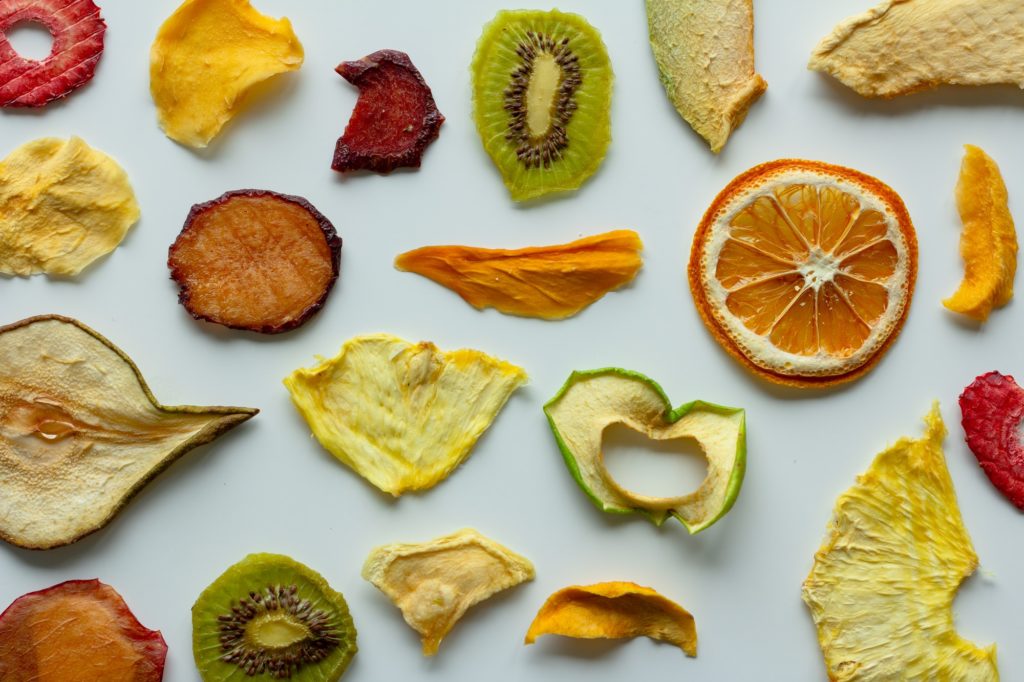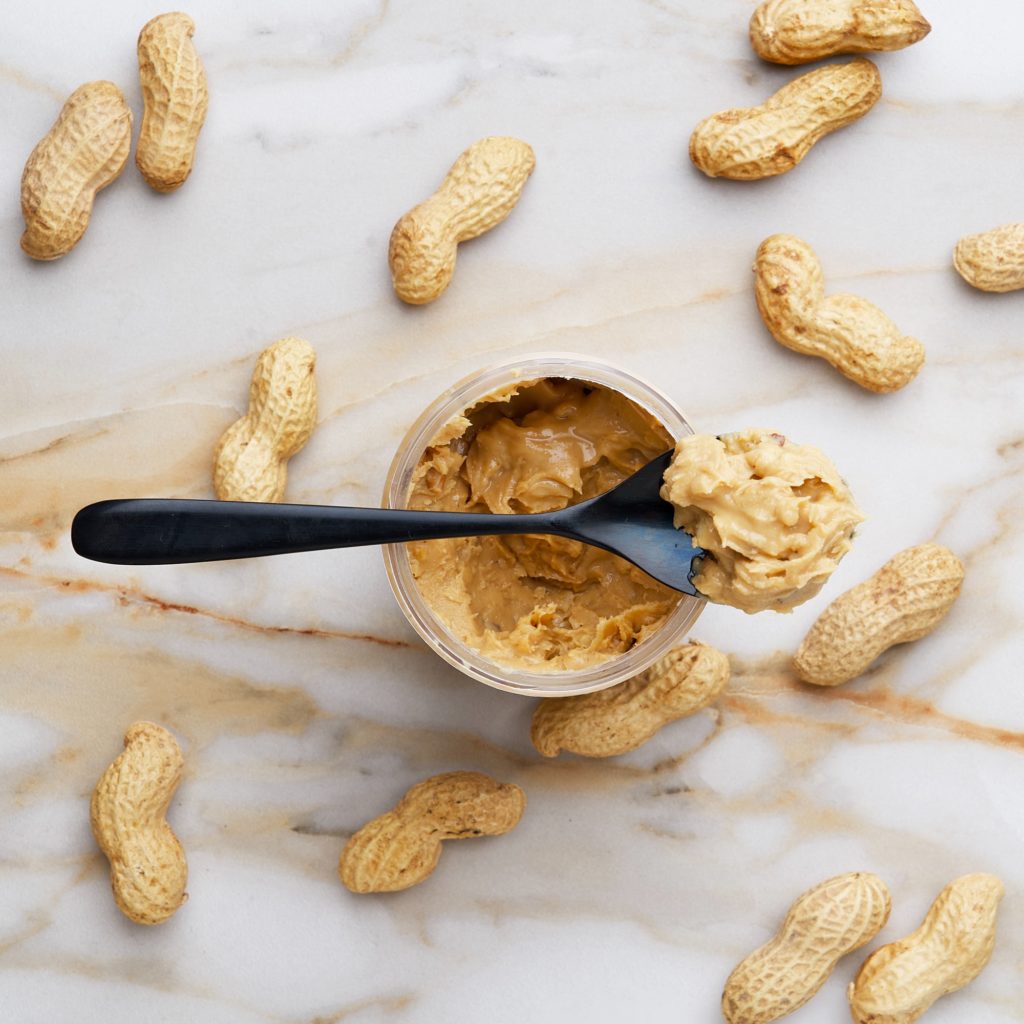By Dylan Murphy
Best Snacks for Snowshoeing
Snowshoeing can take up a lot of energy, especially when the snow is deep and you have to exert more effort to move through it. You can burn between 500 to 1000 calories per hour when you snowshoe.
Therefore, it is essential to bring foods that can replenish your energy well, and it will also help if these snacks are lightweight and easy to pack.
Best Snacks for Snowshoeing
- Nuts and seeds
- Dried fruits
- Energy bars
- Trail mix
- Peanut butter
- Cheese
- Crackers
- Dark chocolate

So, if you’re not sure about what snacks you should bring for your next snowshoeing trip, we’ve got you covered. In this article, you’ll find great food choices that offer plenty of energy, are easy to pack, and are delicious as well.
What Snacks to Bring for Snowshoeing
There are three primary sources of energy that you can find in food: carbohydrates, fats, and proteins. Carbohydrates are broken down and absorbed the fastest into the body, providing you with immediate energy. Protein breaks down much slower than carbohydrates, while fat is broken down the slowest. Hence, fats and proteins offer you constant and longer-lasting energy throughout the day.
In this list, we’ve included snacks with different primary energy sources. These snacks also contain various vitamins, minerals, and other components that help you stay healthy and are beneficial for endurance activities like snowshoeing.
Nuts and seeds
Nuts and seeds such as almonds, pistachios, hazelnuts, pumpkin, sesame, and sunflower seeds – are small and easy to carry with you on a hike or when you go snowshoeing. They are also excellent energy sources, as they are rich in protein, healthy fats, and dietary fiber.
Unlike carbohydrates or simple sugars, fat digests more slowly. This is a good thing for activities like hiking and snowshoeing, which are not high-intensive but take a relatively longer time to complete. Also, fats are a very efficient energy source, providing around 255 calories an ounce, which is more than two times that supplied by either proteins or carbohydrates.
An ounce of mixed nuts and seeds can provide you with around 167 calories. Some vitamins and minerals you can also find in nuts and seeds include Vitamin E, magnesium, phosphorus, and copper.
Dried fruits
Dried fruits, such as mangoes, raisins, and bananas, are another excellent source of energy for your snowshoeing trip. They contain lots of natural sugar in the form of fructose, a great source of carbohydrates.
Dried fruits are also a healthier energy source than other snacks, like chocolate. They contain plenty of vitamins and minerals, such as vitamins A, B, and C, calcium, iron, potassium, magnesium, and dietary fiber. Also, the advantage of dried fruit over regular fruits is they contain less water and won’t freeze when temperatures are very low. An ounce of mixed dried fruits can provide you with around 92 calories.
Energy bars
Energy bars are made to provide you with immediate energy and are typically used by athletes to replenish calories burned. These bars usually contain plenty of carbohydrates, which are digested and absorbed much faster than other sources of energy, and give you a quick burst of energy. They also contain proteins, fats, and some fiber.
A great thing about energy bars is that they are conveniently packed, highly portable, and come in various flavors for you to choose from.
Trail mix
One of the best snacks to bring with you when snowshoeing is trail mix. This snack is an excellent blend of energy sources such as nuts, dried fruit, and granola (typically consisting of oats, nuts, and honey).
With trail mix, you can get plenty of carbohydrates for immediate energy and fats and protein for the overall fuel you’ll need for hiking long distances. And with the various ingredients in it, trail mix is not only nutritious but flavorful as well. You’ll definitely want to consider trail mix as your first choice for snacks.
Peanut butter
Peanut butter is a relatively cheap energy source for when you’re hiking or snowshoeing. Peanut butter contains lots of protein and healthy fats to provide you with the energy you need throughout your activity.
Peanut butter also contains many vitamins and minerals, including vitamins E, B3, and B6, magnesium, potassium, and zinc. You can bring peanut butter with you as a spread in a sandwich, and maybe you can even add jam as well. You can also look for peanut butter squeeze packs, which are easy to access and are resealable. An ounce of peanut butter can provide you with around 167 calories.
Cheese
Cheese is another relatively inexpensive source of energy for the trail. You usually wouldn’t carry cheese on regular hikes because it can melt in warm conditions. But with snowshoeing, the lower temperatures will allow you to bring these as snacks with no problem.
Dairy products such as cheese are excellent sources of carbohydrates. Cheese also contains plenty of protein, fat, and calcium. Furthermore, cheese is also rich in vitamin B12, which helps produce red blood cells and can help prevent fatigue and anemia. Other vitamins and minerals found in cheese include vitamins A, B2, B9, phosphorus, and potassium.
You can carry cheese with you as bite-sized chunks from a firm or semi-firm cheese. For soft cheese, you can bring them as spreads on sandwiches, or you can look for cheese squeeze packs as well.
Crackers
Crackers are easy to pack because they’re thin and lightweight, but they can still provide you with enough energy to get through long hiking or snowshoeing trips.
Crackers contain complex carbohydrates different from the simple carbohydrates or sugars found in foods such as fruits, white bread, candy, and chocolate. Complex carbohydrates contain starch, fibers, proteins, and vitamins and take longer to digest. Crackers may not give you an immediate energy boost. However, they can still provide you with long-lasting energy, especially when you’re hiking for extended periods.
Dark Chocolate
Chocolates have high sugar content, meaning plenty of carbohydrates for an energy boost for various activities. The same applies to dark chocolate. But what makes dark chocolate different is it has a much higher percentage of cacao, around 40% or more than regular chocolate.
Cacao contains flavonoids called flavanol, which are potent antioxidants. Antioxidants help your body use oxygen more efficiently and increase your oxygen intake during digestion. And because dark chocolate has a high cacao content, it also has a larger number of these antioxidants that are very useful for continuous activities such as snowshoeing.
Dark chocolate can provide around 156 calories an ounce and has vitamins and minerals, including vitamins A, K, B3, potassium, phosphorus, and magnesium.
Others
Hot chocolate
Stopping to have a hot or warm drink can feel really good, especially after having hiked out in the cold for a while. And it’s straightforward to prepare hot chocolate. You’ll only need a thermos with hot water and a chocolate packet. You can pair your hot chocolate with snacks you brought, such as crackers and peanut butter or cheese sandwiches.
Cup noodles
Instant noodles may not be the most nutritious food, but it provides you warmth and also makes you feel full. And they’re also easy to prepare. All you need is a thermos with hot water and your cup noodles. Cup noodles also come in different flavors, so that’s definitely a plus.
FAQs
Is snowshoeing easier than hiking?
Snowshoeing can be a bit more challenging activity than hiking. With snowshoeing, moving through snow requires you to exert much more effort, as you have to lift your legs higher than usual. But with hiking, you’re usually walking over flat terrain, which is comparatively more straightforward. Temperature conditions during snowshoeing are also lower, so your body uses more energy to keep you warm.
Is snowshoeing good exercise?
Snowshoeing is an excellent exercise, especially for your lower body. This activity helps build muscles in your thighs and calves and also strengthens your heart and lungs. Depending on snow and temperature conditions, you can burn between 500 to 1000 calories an hour when you snowshoe.
What gear should I bring when snowshoeing?
Equipment you should bring when snowshoeing includes:
- Snowshoes
- Snowshoeing Boots
- Layered Clothing – consists of a base (we recommend Merino wool), middle, and outer layer
- Snowshoeing Socks
- The Ten Essentials
- Others – include hats, gloves, trekking poles, gaiters
Conclusion
Snowshoeing consumes a substantial amount of energy, so it is essential to bring the right kinds of snacks with you. For relatively short hikes, you should get foods with plenty of carbohydrates. For longer trips, you should get snacks with more fats and proteins. You can always bring more than one type of snack depending on the circumstances and for variety as well.
You can also look into other food options if you’re craving something else since taste is also an essential factor. Make sure also that the snacks you bring include other nutrients so that you not only get enough energy but also stay healthier.

